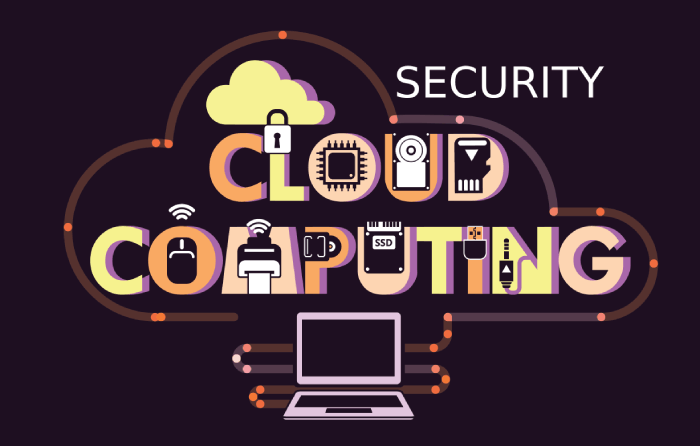According to Gartner, Cloud Identity and Entitlements Management technologies offer an advantage for the management of permissions in multicloud environments. Entitlement management refers to granting, managing, and revoking access permissions, enforcing access policies and best practices.
By 2022, over 90% of companies worldwide will have a mix of multiple clouds or hybrid on-premises and cloud platforms. The scale and flexibility of cloud environments may present a security challenge for organizations trying to manage permissions. As most data breaches happen because of weak credentials, managing entitlements efficiently becomes critical.
Let’s explore what CIEM is and why it can be a solution for identity management challenges.
New Challenges on the IaaS market (Cloud Security)
More companies moving to the cloud means more permissions for business users and machine entities to manage. Since the cloud is flexible and continuously growing, the scale of it may cause a lot of unused permissions.
Attackers can take advantage of these unused permissions to access a company’s cloud environment. There, they can steal data or disrupt operations. The problem is compounded if the organization has to manage thousands of permissions across multiple clouds. Companies with a hybrid infrastructure find it challenging to find a tool that can manage permissions seamlessly on-premises and on the cloud.
Cloud providers’ shared security model only makes the issue more challenging. In this model, you are responsible for handling Identity and Access Management in your cloud environment. Add to that having to manage permissions for multiple clouds or a hybrid environment.
Limitations of Cloud IAM (Cloud Security)
- Limited to one cloud: Cloud IAM tools are intended to manage identity and access only in the cloud environment of the cloud provider. The tool controls the access permissions for applications, people, and machine entities to accounts, resources, and services.
- Different rules across clouds: Each of the leading cloud providers has its own rules and IAM policies. Therefore, when you leverage multiple clouds, you need to use specific cloud-agnostic tools. If not, you’ll need to use multiple tools, increasing the risk of configuration issues. IAM solutions and features are not efficient enough to control and monitor permissions across environments.
- Misconfigured access permissions: Multi-cloud and hybrid environments may leave vulnerabilities because of misconfigured access permissions. Attackers can take advantage of those vulnerabilities and sneak in, conducting advanced persistent threats. That’s why misconfiguration vulnerabilities are still on the OAP top list.
- Poorly executed security best practices: Organizations often manage cloud permissions and access credentials manually. Moreover, most rely on users to remember to change their passwords, with the increased risk of sharing credentials and using the passwords for a long time.
Cloud Infrastructure Entitlement Management comes to solve those challenges.
What Is CIEM?
Cloud Infrastructure Entitlement Management is a software solution that implements the principle of least privilege in multi-cloud environments. Least-privilege refers to limit user’s access to resources on an as-needed basis CIEM addresses the limitations of IAM solutions of securing multicloud and hybrid environments. IAM solutions cannot enforce the principle of least privilege at the cloud scale.
CIEM solutions help companies manage and monitor the activity of every user in the company environment, even across multiple clouds and on-prem infrastructure.
In 2020, Gartner introduced CIEM as a subset of identity governance, categorizing it as an innovation trigger technology.
What problems does CIEM solve?
- Poor management of privileged entities.
- Limitations of Cloud Service Providers IAM features.
- Managing different security policies across multiple platforms.
- Occurrence of Cloud Permissions Gap, when entities have too many permissions and leave some of them unused.
How CIEM Reduces Identity Risks in Multicloud Environments?
- Provides a centralized vision: CIEM provides central visibility and control, allowing companies to eliminate excess permissions.
- Monitors and remediates excessive permissions: The system applies artificial intelligence to assign a score for the exposure level of each environment.
- Continuously assess the permissions exposure level: The entitlements manager uses the assessments to identify opportunities to reduce the risk.
- Unifies the cloud security efforts: CIEM solutions integrate into existing workflows, like automation and response, DevOps pipelines, therefore providing a consistent and unified intelligence.
Why do you need CIEM?
Managing permissions efficiently is a must for keeping environments secure. It offers a more comprehensive solution for cloud-native platforms’ security than existing Identity Management tools. Here are some advantages of deploying a CIEM solution:
- Allows businesses to manage privileged permissions across multiple environments.
- Reduces the security team’s workload by automating identity monitoring and management.
- Mitigates the risks of excessive permissions through visualizing the level of exposure
- Reduces the risks of internal threats and data breaches
Wrap Up
CIEM can be the best approach for a cloud security platform that helps organizations manage entitlements compatible with a multi-cloud and hybrid environment. It provides a proactive solution with automation and artificial intelligence capabilities to assess and mitigate risks continuously. In summary, at this moment, where most companies need to manage identity risks for multiple environments, CIEM can be the answer.











Leave a Reply